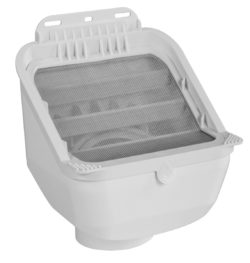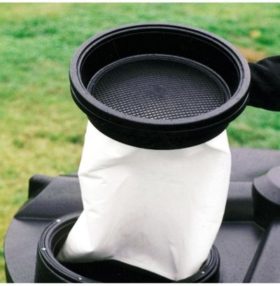Using rainwater in and around the home is an effective way to conserve precious water supplies and reduce mains water use.
Importantly we all want clean, healthy water in our rainwater tanks.
A recent Polymaster study found that households spend significant time in choosing the perfect tank; however, overlook critical measures that eliminate the ‘nasties’ entering your tank. This same study found that once installed; the on-going maintenance was ignored/forgotten.
When looking at your tank, take a few steps back and take notice of the roof, because whatever falls on it has every chance of making its way into your tank, unless some simple, effective measures are taken.
PREVENTION IS THE BEST SOLUTION TO CLEAN HEALTHY WATER.
9 SIMPLE STEPS TO FOLLOW
1. Start at your roof
Is it clean and clear of debris? Any build-up of grime, mould, bird/animal droppings or
vegetative growth could dislodge in heavy rain ending up in the tank.
Where possible, remove overhanging branches, and areas birds can nest.
High-pressure wash your roof. Please remember SAFETY first when on your roof.
Pro Tip: Before 1970, many Australian homes used paints that contained high levels of lead, which can contaminate your water. We recommend reading the Lead Alert – It’s a six-step guide on how to minimise risk.
2. Install gutter guards.
Clean out your gutters and install appropriate guards to animal/bird proof it and reduce future leaf build up. To significantly reduce dirt/soil accumulating and prevent airborne seeds from taking a footing.
4. Install a first flush diverter.
Another preventative measure to take, especially to remove sediment, is to direct the water through a first flush diverter. The first downpour will clean your roof and dislodge grime and bird droppings which potentially can make its way into the tank. Have this first downpour diverted into this device, so only clean water enters your tank.
Filter your water before it enters the tank with one of the most revolutionary maintenance-free filters in the world. Check out the Instructional Video. The Vortex filter not only ensures debris is removed; it also aerates your water. Oxygen-rich water inhibits the growth of undesirable anaerobic organisms.
6. Add a block-out light manhole cover.
Algae require sunlight to grow. Some cheaper poly tanks on the market do not block out light. Polymaster is 100% block-out. Inferior quality tanks can, unfortunately, assist in algae growth. With a quality tank, also cover your manhole opening (where the downpipe goes into the strainer) as it will:
- Stop light entering, therefore, stop algae bloom
- Prevents leaves from building up on top of the tank.
8. Choose a rainwater tank treated with antimicrobial protection.
Polymaster’s Waterguard range of rainwater tanks is Infused with Sanitized® antimicrobial protection. It is moulded into the tank’s polymer during the manufacturing process, making it a more convenient and cost-effective way of protecting your tank against bacteria. Organic matter such as algae, mould and mildew can build-up inside your tank, which can make it dirty and risk contaminating your rainwater. Sanitized® antimicrobial protection actively protects your tank keeping your rainwater tanks cleaner and your water fresher, making it a safe and sustainable choice for your home.
9. Install a TankVac.
A tank vac will automatically clean the inside floor of your tank every time your tank is filled.
BENEFITS OF THESE PREVENTATIVE STEPS?
- Better quality water
- Less chance of pumps breaking down/wearing out
- Cleaner inner tank
- Save on-going maintenance costs
CHECK OUT DEPT. OF HEALTH – RAINWATER TANK GUIDELINES
“In addition to six-monthly inspections, tanks should be inspected every 2-3 years for the presence of accumulated sediment. If the bottom of the tank is covered with sediment the tank should be cleaned.” Guidance on use of rainwater tanks
FURTHER ASSISTANCE
At Polymaster we’re more than happy to answer your questions. Please feel free to give us a call on 1800 062 064 or email sales@polymaster.com.au
More Similar News
View all News
Victoria’s Drought Infrastructure Rebates

Smart Strategies for using a Liquid Fertiliser







